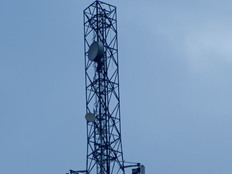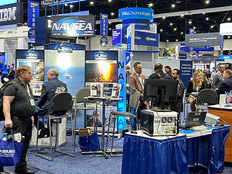How DOD Can Reinvent Video Transport
So, what can be done to ensure that video quality meets ISR operational requirements? Enter Secure Reliable Transport protocol. SRT is a modified version of UDP-based Data Transfer (UDT) protocol and offers a viable solution to the challenges of live low-latency video transmission over unpredictable networks.
Designed for high-throughput file transmission, SRT uses transport-layer mechanisms to enable packet-loss recovery and signal-timing reconstruction. It implements changes to the buffer depletion and congestion control mechanisms in UDT, as well as adding flow control and payload encryption mechanisms, to deliver several key benefits.
SRT simplifies diagnostic tasks for even entry-level network operators. SRT stream telemetry lets network video administrators accurately pinpoint specific network segments and devices, making it easier for them to derive connection health and diagnose outages or degradation in FMV distribution chains. This is particularly important following network security updates or network equipment replacement.
End-to-end security is also assured. SRT encrypts media streams at the transmission payload level, with the 128/256-bit AES encryption engine ensuring that valuable content is protected, from contribution to distribution, without adding costs or impacting stream efficiency.
EXPLORE: Camera and networking tech brings bears from national parks into your living room.
Configurable flow control delivers low latency video while overcoming the most demanding network challenges. Whereas other protocols (like TCP) will endlessly attempt to request missing data, resulting in “rebuffering” during crowded network conditions, SRT connections can correct or ignore missing data in the interest of maintaining a target connection latency. SRT connection latency, while fixed, is adaptable to network conditions through explicit configuration that can be optimized from link telemetry.
This combination of benefits — along with the fact that SRT protects against jitter, packet loss and bandwidth fluctuation — illustrates why SRT presents a compelling alternative to raw UDP. Even limited implementations would produce immediate improvements in video quality and reliability, thereby supporting ISR activities by ensuring the best possible viewing experience.
The Motion Imagery Standards Board, a DOD governing body establishing standards for the interoperable exchange of video and geospatial metadata, has recognized the benefits that SRT affords ISR workflows. Current versions of MISB standards profiles include SRT as an allowed transmission protocol for FMV, furthering the interoperability of FMV data among the U.S. military branches and NATO nations.
MORE FROM FEDTECH: Popular webcams allow the public to peer into inaccessible federal facilities.
Optimizing Video in ISR Workflows
The final piece of the puzzle is knowing what to look for when choosing video streaming components for mission-critical ISR and defense applications. Here are five factors to consider:
-
Low latency: Having access to low-latency video is very important for ISR operations, particularly when video is being used for navigation on autonomous or remotely operated platforms. The ability to operate as close to real time as possible is essential for informed decision-making.
-
High-quality video at low bitrates: ISR networks commonly deal with cases where bandwidth is limited. It’s essential to choose an FMV encoder that can deliver high-quality video even at very low bitrates for bandwidth-constrained environments. SRT helps further protect high-quality video over unreliable networks.
-
Reliability: Choose an FMV encoder that’s suited to the environment in which it operates and meets stringent physical, data and security standards (such as military standards for harsh environmental conditions, including low pressure, extreme temperatures, shock and vibration).
-
Ease of use: Usability is an essential element of any FMV encoder. It should be simple to use and easily configurable with an intuitive user interface, allowing military personnel to spend more time focusing on the mission at hand.
-
Industry expertise: It’s not all about hardware or software. Defense organizations should also pick a vendor with the deep domain expertise and industry knowledge needed to fully understand the use case and potential challenges that may arise.
Despite the rapid, recent evolution of video technology, the level of video quality generated by cameras and sensors during ISR activities doesn’t always make it to the end users. The transmission path is often the culprit, and SRT offers a way to overcome the most common issues — if defense organizations are prepared to embrace it.










